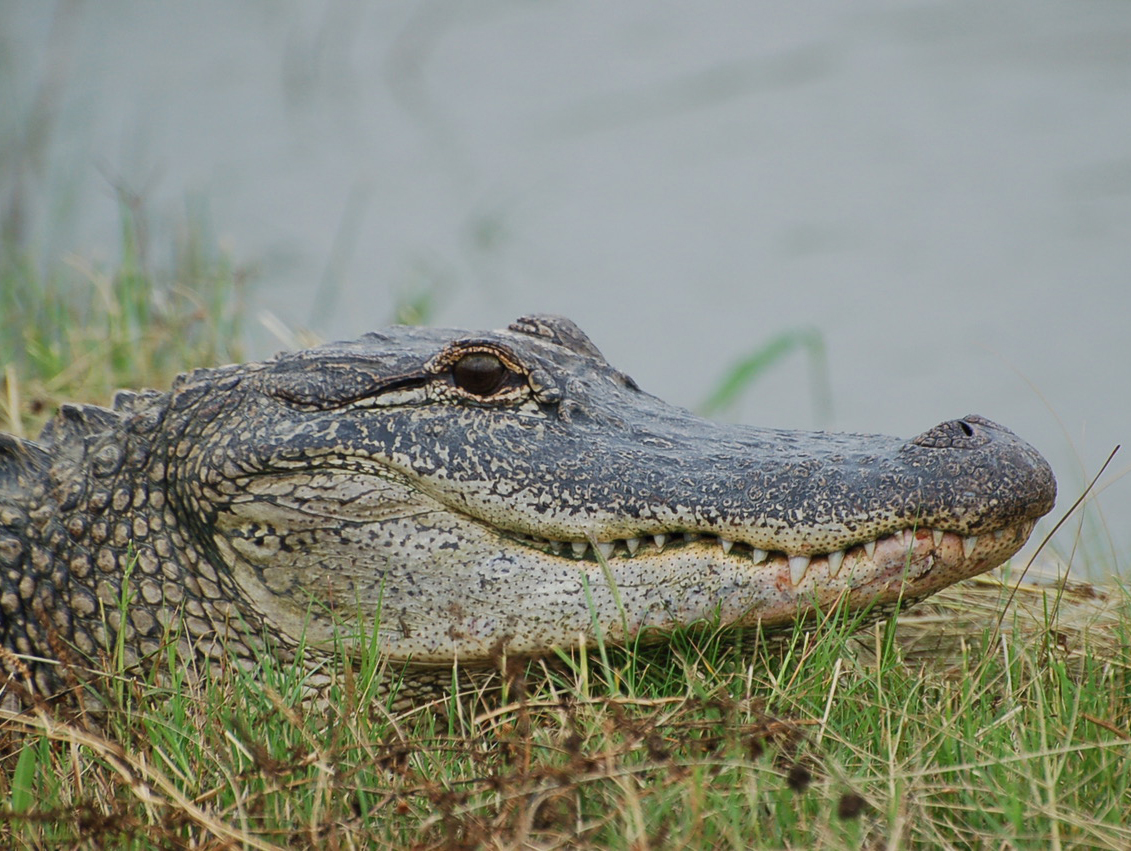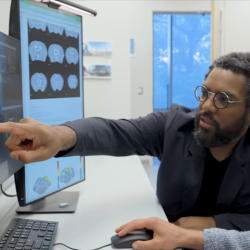Alligator Study Reveals Insight into Dinosaur Hearing
UMD biologist finds alligators map sound the way birds do, suggesting the hearing strategy existed in their common ancestor and dinosaurs
Animal brains determine where a sound is coming from, by analyzing the minute difference in time it takes audio waves to reach each ear—a cue known as interaural time difference. What happens to the cue once the signals get to the brain depends on what kind of animal is doing the hearing.
Scientists have known that birds are exceptionally good at creating neural maps to chart the location of sounds, and that the strategy differs in mammals. Little was known, however, about how alligators process interaural time difference.
A new study of American alligators found that the reptiles form neural maps of sound in the same way birds do. The research by Catherine Carr, a Distinguished University Professor of Biology at the University of Maryland, and her colleague Lutz Kettler from the Technische Universität München, was published in the Journal of Neuroscience on March 18, 2019.
Most research into how animals analyze interaural time difference has focused on physical features such as skull size and shape, but Carr and Kettler believed it was important to look at evolutionary relationships.
Birds have very small head sizes compared with alligators, but the two groups share a common ancestor—the archosaur—which predates dinosaurs. Archosaurs began to emerge around 246 million years ago and split into two lineages; one that led to alligators and one that led to dinosaurs. Although most dinosaurs died out during the mass extinction event 66 million years ago, some survived to evolve into modern birds.
Carr and Kettler’s findings indicate that the hearing strategy birds and alligators share may have less to do with head size and more to do with common ancestry.
“Our research strongly suggests that this particular hearing strategy first evolved in their common ancestor,” Carr said. “The other option, that they independently evolved the same complex strategy, seems very unlikely.”
To study how alligators identify where sound comes from, the researchers anesthetized 40 American Alligators and fitted them with earphones. They played tones for the sleepy reptiles and measured the response of a structure in their brain stems called the nucleus laminaris. This structure is the seat of auditory signal processing. Their results showed that alligators create neural maps very similar to those previously measured in barn owls and chickens. The same maps have not been recorded in the equivalent structure in mammal brains.
“We know so little about dinosaurs,” Carr said. “Comparative studies such as this one, which identify common traits extending back through evolutionary time add to our understanding of their biology.”
###
The research paper “Neural maps of interaural time difference in the American alligator: a stable feature in modern archosaurs,” Lutz Kettler and Catherine Carr, was published in the Journal of Neuroscience on March 18, 2019.
This study was supported by the National Institutes of Health (Award No. DCD000436). The content of this article does not necessarily reflect the views of this organization.
Writer: Kimbra Cutlip
Media Relations Contact: Abby Robinson, 301-405-5845, abbyr@umd.edu
University of Maryland
College of Computer, Mathematical, and Natural Sciences
2300 Symons Hall
College Park, Md. 20742
www.cmns.umd.edu
@UMDscience
About the College of Computer, Mathematical, and Natural Sciences
The College of Computer, Mathematical, and Natural Sciences at the University of Maryland educates more than 9,000 future scientific leaders in its undergraduate and graduate programs each year. The college's 10 departments and more than a dozen interdisciplinary research centers foster scientific discovery with annual sponsored research funding exceeding $175 million.








